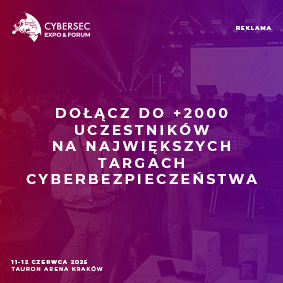Software Licensing Market CAGR to be at 13% By 2030 | Significant Growth Driven by Digital Transformation
The global software licensing market is experiencing robust growth, driven by digital transformation, SaaS adoption, and rising enterprise software demand.
The global software licensing market is undergoing a significant transformation, fueled by the rapid digitalization of businesses, increased adoption of cloud computing, and the rising importance of software compliance. Organizations worldwide are increasingly dependent on software to manage operations, innovate, and stay competitive. This has amplified the demand for efficient and flexible software licensing models that align with evolving business needs. With the shift towards SaaS-based solutions and pay-as-you-go subscription models, traditional software licensing is being replaced by more dynamic and scalable systems. The market is expected to witness substantial growth over the next decade, driven by technological advancements and heightened regulatory compliance requirements.
Download Sample Report (Get Full Insights in PDF - 100 Pages) at -
https://www.marketresearchfuture.com/sample_request/3848
Software licensing plays a pivotal role in governing how software is used and distributed. It defines the legal framework under which software can be deployed and managed. Effective licensing models not only protect the intellectual property rights of developers but also enable businesses to manage their software assets efficiently. As software complexity increases, organizations are prioritizing advanced license management systems that ensure compliance, prevent misuse, and reduce legal risks. The rise of enterprise resource planning (ERP), customer relationship management (CRM), and IT service management platforms is also contributing to the demand for structured licensing mechanisms.
The software licensing market can be segmented by type, deployment mode, application, end-user, and geography. Based on type, the market is classified into perpetual licensing, subscription-based licensing, and cloud-based licensing. Perpetual licenses allow users to own the software indefinitely, though they often require additional maintenance fees for updates. Subscription licensing, on the other hand, is gaining momentum due to its flexibility and cost-effectiveness. The cloud-based model, which offers usage-based billing and remote accessibility, is becoming the preferred choice for many enterprises, especially those undergoing digital transformation.
In terms of deployment, software licensing solutions are offered as on-premise and cloud-based platforms. On-premise solutions remain relevant for organizations with stringent security requirements, while cloud-based licensing offers scalability and ease of management. Application-wise, licensing solutions cater to a variety of segments including IT & telecom, BFSI, healthcare, manufacturing, education, and retail. Among these, the IT and telecom sector holds a dominant share due to the high volume of software usage and the critical nature of license compliance in these industries.
End-users include small and medium-sized enterprises (SMEs) as well as large enterprises. While large enterprises have traditionally driven demand due to their expansive IT infrastructure, SMEs are now emerging as a significant market due to increasing awareness of the importance of software compliance and the availability of affordable cloud licensing options.
The software licensing market is highly competitive, with the presence of several established and emerging players offering comprehensive licensing solutions. Key industry participants include Microsoft Corporation, IBM Corporation, Oracle Corporation, Thales Group, Flexera Software, Broadcom Inc., Snow Software, Reprise Software, DXC Technology, and License Dashboard. These companies provide solutions ranging from license administration and compliance monitoring to advanced analytics and software asset management (SAM).
Microsoft remains a dominant player due to its broad range of enterprise software and strong adoption of its Microsoft 365 and Azure platforms. IBM and Oracle offer robust license management platforms integrated with their respective enterprise solutions. Flexera and Snow Software have gained traction for their focus on software asset management and compliance automation. These vendors are investing in AI-driven analytics and cloud-native licensing platforms to offer real-time visibility into license usage and optimize software spend.
Buy Now Premium Research Report -
https://www.marketresearchfuture.com/checkout?currency=one_user-USD&report_id=3848
Innovation and strategic partnerships are central to market leadership. Key players are expanding their service portfolios to include features like automated license tracking, predictive usage analytics, and compliance risk assessment. The integration of licensing platforms with enterprise systems such as ITSM, ERP, and cloud orchestration tools is enabling businesses to manage their digital assets more effectively.
Recent industry developments reflect a strong focus on enhancing the transparency, automation, and flexibility of software licensing systems. In early 2024, Flexera announced the launch of an AI-powered license optimization tool designed to reduce software costs for large enterprises. Microsoft also updated its licensing terms to simplify cloud usage rights, improving customer flexibility across hybrid and multi-cloud environments. Meanwhile, Oracle introduced an integrated licensing analytics dashboard as part of its Fusion Cloud Applications to help customers identify unused licenses and reallocate resources efficiently.
The growing popularity of open-source software has prompted several commercial vendors to adjust their licensing strategies to remain competitive. In 2023, Red Hat streamlined its subscription model for enterprise Linux users, emphasizing long-term value and consistent support. In parallel, the software compliance landscape is evolving with stricter enforcement from industry watchdogs and software vendors. Companies like BSA | The Software Alliance are intensifying efforts to curb unlicensed software usage across various regions.
The rise of Software as a Service (SaaS) continues to reshape licensing frameworks. Many providers are transitioning from static licensing models to usage-based or user-based models. This evolution is especially evident in CRM, collaboration tools, and cybersecurity solutions, where dynamic scaling is critical. The emergence of blockchain for license verification and the integration of machine learning for usage prediction are among the cutting-edge developments transforming the licensing ecosystem.
The software licensing market is influenced by a complex set of drivers, restraints, opportunities, and challenges. Key drivers include the accelerating pace of digital transformation across industries, increasing demand for secure and compliant IT infrastructure, and the widespread adoption of SaaS and cloud computing. Businesses are prioritizing cost-efficient, scalable software models, prompting a shift from perpetual licenses to flexible, subscription-based plans.
Rising concerns about software piracy and compliance violations are also pushing companies to invest in robust license management systems. Regulatory bodies are intensifying their scrutiny on software usage, compelling organizations to deploy tools that monitor license usage, detect anomalies, and ensure audit readiness. This compliance-focused approach is especially crucial for sectors such as healthcare, banking, and government, where data protection and operational continuity are paramount.
However, the market faces challenges such as the complexity of managing hybrid IT environments and the lack of awareness among SMEs regarding the benefits of structured licensing. The high initial investment in license management tools can also deter small businesses. Moreover, vendor lock-in issues and ambiguities in software usage rights across jurisdictions remain hurdles for many organizations.
Nonetheless, the market presents promising opportunities. The rise of AI-driven analytics, blockchain-enabled license tracking, and cloud-native SAM platforms are opening new avenues for growth. Software vendors and enterprises alike are exploring these innovations to streamline operations, reduce compliance risks, and maximize software ROI. The increased integration of licensing tools with DevOps, CI/CD pipelines, and containerized environments is expected to further drive market expansion.
The software licensing market exhibits diverse growth patterns across regions, shaped by digital infrastructure maturity, regulatory frameworks, and industry demand. North America leads the global market due to the strong presence of major software companies, high cloud adoption rates, and stringent intellectual property regulations. The United States, in particular, is at the forefront, driven by its dynamic technology sector and widespread adoption of enterprise software across verticals.
Europe follows closely, with countries like Germany, the UK, and France showing high demand for license compliance solutions, especially in industries such as finance, healthcare, and manufacturing. The General Data Protection Regulation (GDPR) and similar compliance mandates are encouraging businesses in the region to invest in secure, transparent licensing mechanisms. The European market also benefits from a robust regulatory environment that promotes software standardization and fair use.
Asia-Pacific is emerging as the fastest-growing region, supported by rapid industrialization, a booming IT sector, and increasing digital awareness among businesses. Countries like China, India, Japan, and South Korea are investing heavily in cloud infrastructure and enterprise IT solutions, driving demand for flexible licensing systems. The region is also witnessing increased efforts to combat software piracy, with governments launching initiatives to promote the use of licensed software.
Latin America and the Middle East & Africa (MEA) are gradually embracing software licensing as digitalization takes root. While challenges such as low awareness and limited enforcement persist, the market potential remains high, especially in urban centers where enterprise software usage is on the rise. Multinational companies entering these regions are contributing to market growth by bringing global best practices and compliance standards.
The global software licensing market is at a critical juncture, shaped by evolving business models, rising compliance expectations, and technological innovation. As organizations strive to balance operational efficiency with regulatory adherence, the importance of intelligent and flexible licensing systems continues to grow. Subscription and cloud-based licensing models are becoming the new standard, supported by advanced software asset management platforms that offer real-time insights and automation.
Browse In-depth Market Research Report (100 Pages, Charts, Tables, Figures) Software Licensing Market –
https://www.marketresearchfuture.com/reports/software-licensing-market-3848
Market players are capitalizing on this shift by introducing AI-powered tools, blockchain integration, and user-centric pricing strategies. With North America and Europe maintaining strong footholds and Asia-Pacific emerging as a high-growth region, the market is set to expand considerably over the coming years.
As the digital economy continues to evolve, companies that prioritize proactive software license management will not only reduce risk but also unlock significant cost savings and operational agility. The future of software licensing lies in adaptability, transparency, and integration — all essential traits for thriving in a fast-paced, software-driven world.
Top Trending Reports -
IT Asset Disposition Market -
https://www.marketresearchfuture.com/reports/it-asset-disposition-market-1002
Middle Office Outsourcing Market -
https://www.marketresearchfuture.com/reports/middle-office-outsourcing-market-9553
Blockchain Identity Management Market -
https://www.marketresearchfuture.com/reports/blockchain-identity-management-market-6197
AI Robots Market -
https://www.marketresearchfuture.com/reports/ai-robots-market-6684
Cloud API Market -
https://www.marketresearchfuture.com/reports/cloud-api-market-2572
Cloud High-Performance Computing Market -
https://www.marketresearchfuture.com/reports/cloud-high-performance-computing-market-5816
Legal Process Outsourcing Market Size, Outlook - 2032
https://www.marketresearchfuture.com/reports/legal-process-outsourcing-market-4572
Mobile Fronthaul Market -
https://www.marketresearchfuture.com/reports/mobile-front-haul-market-1191
Cellular Networks Market -
https://www.marketresearchfuture.com/reports/cellular-networks-market-4654
Cleaning Robot Market
Privacy Management Software Market
About Market Research Future:
At Market Research Future (MRFR), we enable our customers to unravel the complexity of various industries through our Cooked Research Report (CRR), Half-Cooked Research Reports (HCRR), Raw Research Reports (3R), Continuous-Feed Research (CFR), and Market Research & Consulting Services.
MRFR team have supreme objective to provide the optimum quality market research and intelligence services to our clients. Our market research studies by products, services, technologies, applications, end users, and market players for global, regional, and country level market segments, enable our clients to see more, know more, and do more, which help to answer all their most important questions.
Contact:
Market Research Future (Part of Wantstats Research and Media Private Limited)
99 Hudson Street, 5Th Floor
New York, NY 10013
United States of America
+1 628 258 0071 (US)
+44 2035 002 764 (UK)
Email: sales@marketresearchfuture.com
Website: https://www.marketresearchfuture.com
Sagar Kadam
Market Research Future
+1 628-258-0071
email us here
Visit us on social media:
Facebook
X
LinkedIn
Legal Disclaimer:
EIN Presswire provides this news content "as is" without warranty of any kind. We do not accept any responsibility or liability for the accuracy, content, images, videos, licenses, completeness, legality, or reliability of the information contained in this article. If you have any complaints or copyright issues related to this article, kindly contact the author above.
Protection Tax Helps Clients Resolve Unfiled Returns Before IRS Action Escalates
leagend T31 Sets New Standard for Affordable and Accurate OBD II Diagnostics
Couple Opens Unique '432Hz' Live Music Sanctuary on Spain's Costa del Sol for Summer Vibes and Son Awareness
Kalendarium
Więcej ważnych informacji
 Jedynka Newserii
Jedynka Newserii

 Jedynka Newserii
Jedynka Newserii

Handel

Ze względu na różnice w cenach surowce wtórne przegrywają z pierwotnymi. To powoduje problemy branży recyklingowej
Rozporządzenie PPWR stawia ambitne cele w zakresie wykorzystania recyklatów w poszczególnych rodzajach opakowań. To będzie oznaczało wzrost popytu na materiały wtórne pochodzące z recyklingu. Obecnie problemy branży recyklingu mogą spowodować, że popyt będzie zaspokajany głównie przez import. Dziś do dobrowolnego wykorzystania recyklatów nie zachęcają przede wszystkim ceny – surowiec pierwotny można kupić taniej niż ten z recyklingu.
Przemysł spożywczy
Rośnie presja konkurencyjna na unijne rolnictwo. Bez rekompensat sytuacja rolników może się pogarszać

Rolnictwo i żywność, w tym rybołówstwo, są sektorami strategicznymi dla UE. System rolno-spożywczy, oparty na jednolitym rynku europejskim, wytwarza ponad 900 mld euro wartości dodanej. Jego konkurencyjność stoi jednak przed wieloma wyzwaniami – to przede wszystkim eksport z Ukrainy i niedługo także z krajów Mercosur, a także presja związana z oczekiwaniami konsumentów i Zielonym Ładem. Bez rekompensat rolnikom może być trudno tym wyzwaniom sprostać.
Transport
Infrastruktury ładowania elektryków przybywa w szybkim tempie. Inwestorzy jednak napotykają szereg barier

Liczba punktów ładowania samochodów elektrycznych wynosi dziś ok. 10 tys., a tempo wzrostu wynosi ok. 50 proc. r/r. Dynamika ta przez wiele miesięcy była wyższa niż wyniki samego rynku samochodów elektrycznych, na które w poprzednim roku wpływało zawieszenie rządowych dopłat do zakupu elektryka. Pierwszy kwartał br. zamknął się 22-proc. wzrostem liczby rejestracji w ujęciu rocznym, ale kwiecień przyniósł już wyraźne odbicie – o 100 proc.
Partner serwisu
Szkolenia

Akademia Newserii
Akademia Newserii to projekt, w ramach którego najlepsi polscy dziennikarze biznesowi, giełdowi oraz lifestylowi, a także szkoleniowcy z wieloletnim doświadczeniem dzielą się swoją wiedzą nt. pracy z mediami.








.gif)

 |
| |
| |
|